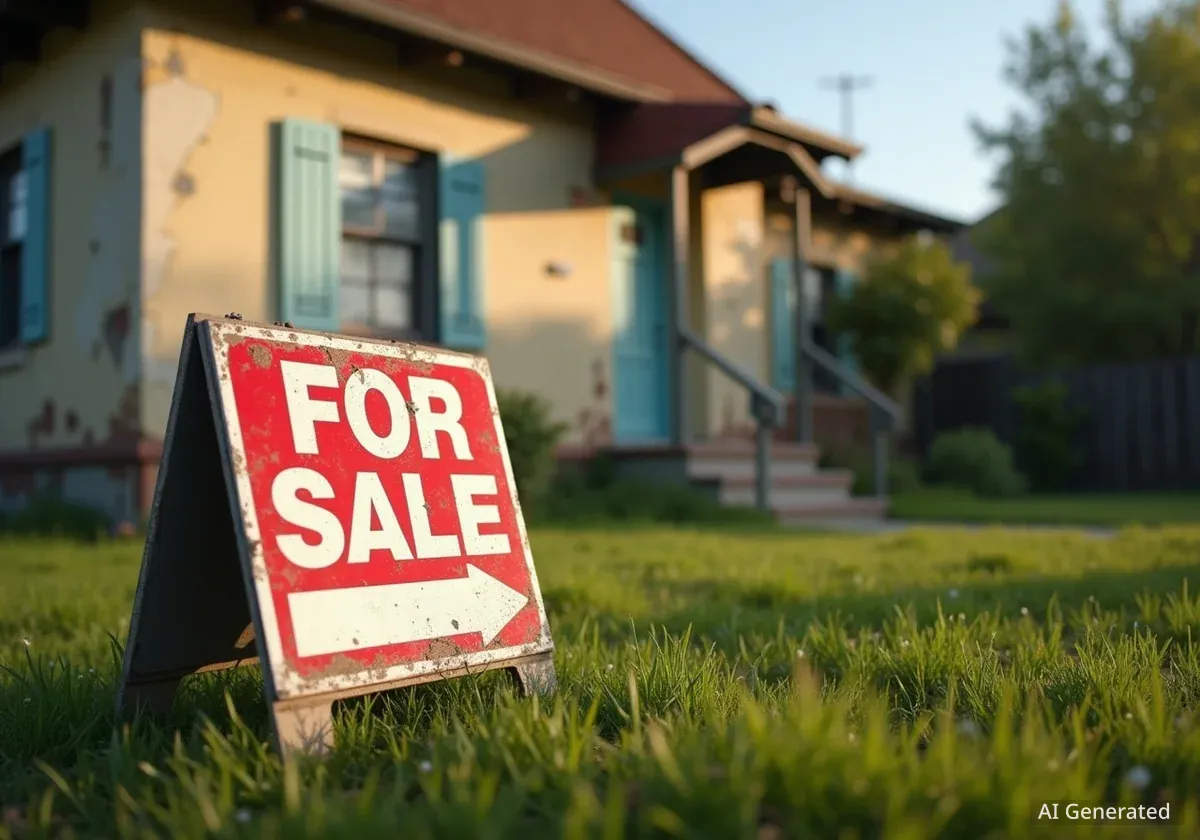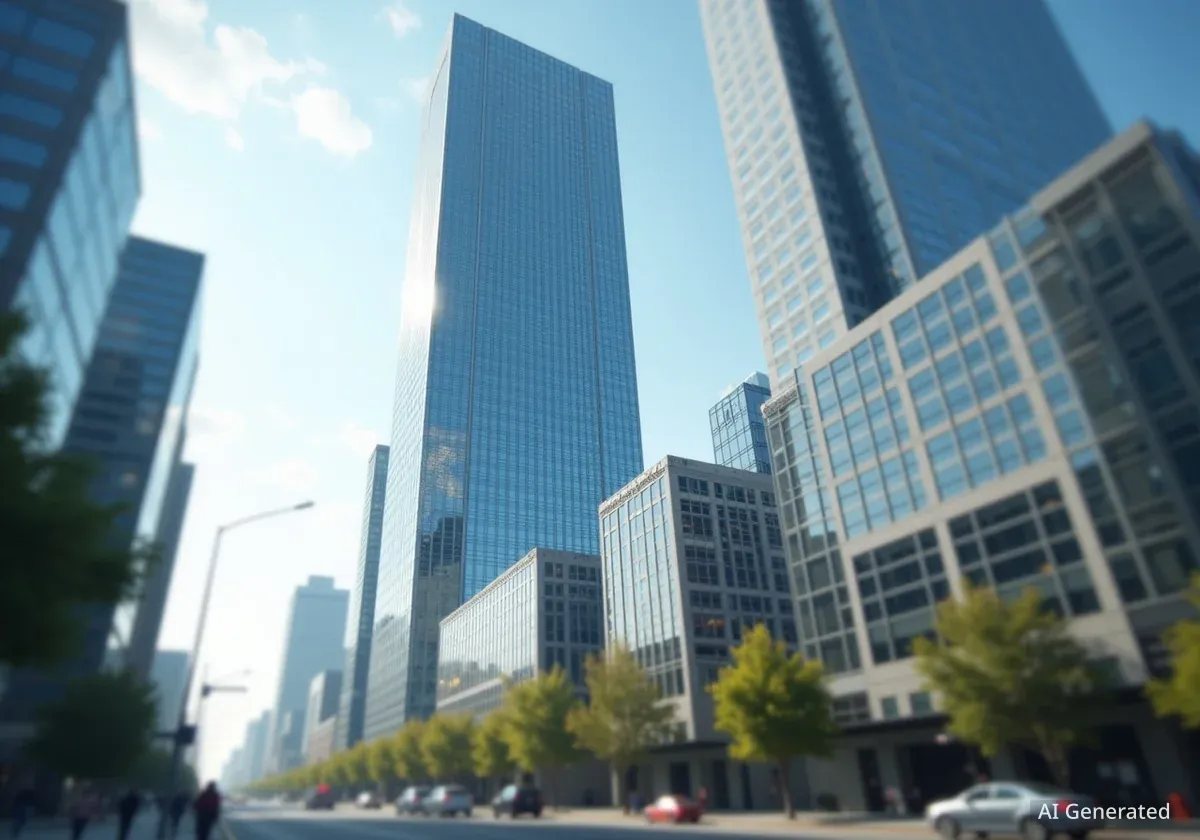In a shifting real estate market, sellers are finding that homes are taking longer to sell than in previous years. To achieve a quick and profitable sale, homeowners must avoid common pitfalls that can deter potential buyers. Real estate professionals have identified several critical errors that frequently sabotage a home's marketability.
Understanding these mistakes, from pricing strategies to property presentation, is essential for anyone looking to sell their property efficiently. Avoiding these common blunders can significantly increase the chances of attracting qualified offers and closing a deal without unnecessary delays.
Key Takeaways
- Overpricing is the most significant deterrent, immediately alienating informed buyers and often leading to price reductions that signal problems.
- Poor visual presentation, including low-quality photos, clutter, and neglected curb appeal, prevents buyers from envisioning themselves in the home.
- Lack of transparency about known issues and choosing inexperienced representation can destroy buyer trust and lead to lower sale prices.
- Restricting access for showings can frustrate serious buyers and significantly reduce the pool of potential offers.
Pricing and Representation: Setting the Stage for Success
The two most critical decisions a seller makes happen before the home is even listed: setting the price and choosing who will represent them. Errors in these initial stages can have long-lasting negative effects on the entire selling process.
1. Overpricing the Property
Setting an initial asking price that is too high is one of the most damaging mistakes a seller can make. According to Fred Loguidice, a real estate expert and founder of Sell My House Fast Wisconsin, this is a frequent and costly error. An inflated price can cause a property to languish on the market.
"I know you love your home, and you want to get every last dollar you can out of it, but an overpriced home will almost always sit on the market," Loguidice stated.
Today's buyers are well-informed, with access to extensive data on comparable sales and market conditions. "If your home is priced 10% higher than the comps, buyers will see it as a bad value and simply won't bother," he added. This often forces sellers into a cycle of price reductions, which can be perceived as a red flag by potential buyers, who may assume something is wrong with the property.
2. Selecting the Wrong Agent or Attempting an Unprepared FSBO
The choice of representation can make or break a sale. Paula Aragone, founder and CEO of Aragone & Associates, warns that hiring an inexperienced agent or attempting a For-Sale-By-Owner (FSBO) transaction without proper preparation is a major misstep.
The Value of an Experienced Agent
A seasoned real estate agent brings more than just market access. Their expertise includes pricing psychology, negotiating skills, understanding of legal requirements, and a network of qualified buyers. This professional guidance often results in a faster sale and a higher final price compared to inexperienced agents or unprepared FSBOs.
"Seasoned agents understand pricing psychology, know which improvements deliver the highest return, and have proven systems to attract qualified buyers fast," Aragone explained. She noted that both inexperienced agents and many FSBO sellers often struggle with pricing, legal disclosures, and effective marketing. "Both scenarios typically result in longer market time and a significantly lower sale price," she concluded.
Visual Presentation: The Buyer's First Impression
In the digital age, a buyer's first encounter with a home is almost always online. The visual appeal of a property, from its photographs to its physical condition during a showing, is paramount.
3. Using Low-Quality Photography
Professional photography is no longer a luxury; it's a necessity. Missy Derr of Engel & Völkers Atlanta strongly advises against sellers taking their own pictures. "Whether you know it or not, your first showing happened online," Derr said. "High-quality photos and advertising will compel people to see your home in person next.”
She emphasized that in a competitive market, listings must stand out. Professional photos, videos, and graphics create a compelling narrative that captures a buyer's attention. However, she also cautioned against over-editing photos to misrepresent the property, as this can lead to disappointment when buyers see the home in person.
4. Failing to Declutter and Depersonalize
Excessive clutter and personal items can prevent buyers from visualizing the space as their own. Joe Ellul-Turner, founder of Darscover, identified this as a simple but common mistake. He has seen homes filled with family photos, cluttered countertops, and numerous personal trinkets.
"A buyer needs to be able to envision their life in the space," Ellul-Turner said. "They need to see a blank canvas, not your personal gallery."
He advises clients to pack away personal items, clear out closets, and store excess furniture before listing. While the home might feel sterile to the seller, it appears spacious and full of potential to a prospective buyer.
5. Skipping Professional Staging
For vacant homes, staging can be a game-changer. Missy Derr noted that failing to stage an empty house is a significant mistake. "Professional, stylish, yet neutral staging will appeal to a wide audience and increase the buyer pool you are targeting," she advised. Staging is particularly helpful for properties with unusual layouts, as it demonstrates how the space can be used effectively.
For sellers still living in the home, she recommends keeping it "show-ready" at all times. This involves meticulous cleaning, removing polarizing items related to politics or religion, and packing away anything not immediately needed to create a sense of spaciousness.
Condition and Transparency: Building Buyer Trust
The physical condition of the home and the seller's honesty about it are crucial for building the trust needed to close a deal. Neglecting repairs and hiding problems are sure ways to jeopardize a sale.
6. Not Making Necessary Repairs
Ignoring needed repairs can significantly prolong the time a home spends on the market. Alexei Morgado, CEO of Lexawise Real Estate Exam Preparation, and Missy Derr both stress the importance of addressing issues before listing.
Return on Investment for Repairs
According to real estate market data, minor repairs and improvements often yield a high return on investment. Fresh paint, updated fixtures, and improved landscaping can add thousands to a home's perceived value for a relatively small upfront cost.
"Fix the paint, replace damaged floors, replace the old roof, spruce up the landscaping," Derr recommended. She pointed out that in the current market, buyers are quick to dismiss homes with old systems or dated styling. Unless a property is explicitly marketed as a "fixer-upper," it should be in the best possible condition the seller's budget allows.
7. Neglecting Curb Appeal
First impressions are lasting. Fred Loguidice emphasized that what a buyer sees upon arrival sets the tone for the entire showing. "When a buyer pulls up to a home and sees a littered lawn, untrimmed bushes, or peeling paint on the front door, they'll assume the interior is just as neglected," he said. This can be a deal-breaker before they even step inside.
Fortunately, improving curb appeal is often one of the most cost-effective ways to enhance a property. A small investment in mulch, new flowers, and a freshly painted front door can dramatically improve a home's attractiveness.
8. Failing to Disclose Known Problems
Honesty is the best policy when selling a home. Both Morgado and Loguidice warn against the temptation to hide known issues, such as a leaky roof or a faulty HVAC system. "This is a huge mistake," Loguidice stated. "The buyer's inspector will very likely find the problem, and when they do, it completely annihilates trust."
What might have been a simple negotiation over a repair credit can escalate into a crisis of confidence, causing the buyer to wonder what else the seller is hiding. Full transparency from the start is always the better approach and is often legally required.
Accessibility: The Final Step
Even a perfectly priced and presented home won't sell if buyers can't see it. Making the property easy to show is a simple but vital part of the process.
9. Limiting Showing Access
While it can be inconvenient to accommodate showings, restricting access can severely hinder a sale. Paula Aragone explained that properties with limited viewing hours or that require excessive advance notice often frustrate serious buyers and their agents.
"The more accessible a property is for showings, the faster it moves," she said. This requires sellers to be flexible with their schedules and maintain the home in a show-ready condition consistently. By making it easy for buyers to visit, sellers maximize their opportunities to receive an offer.





